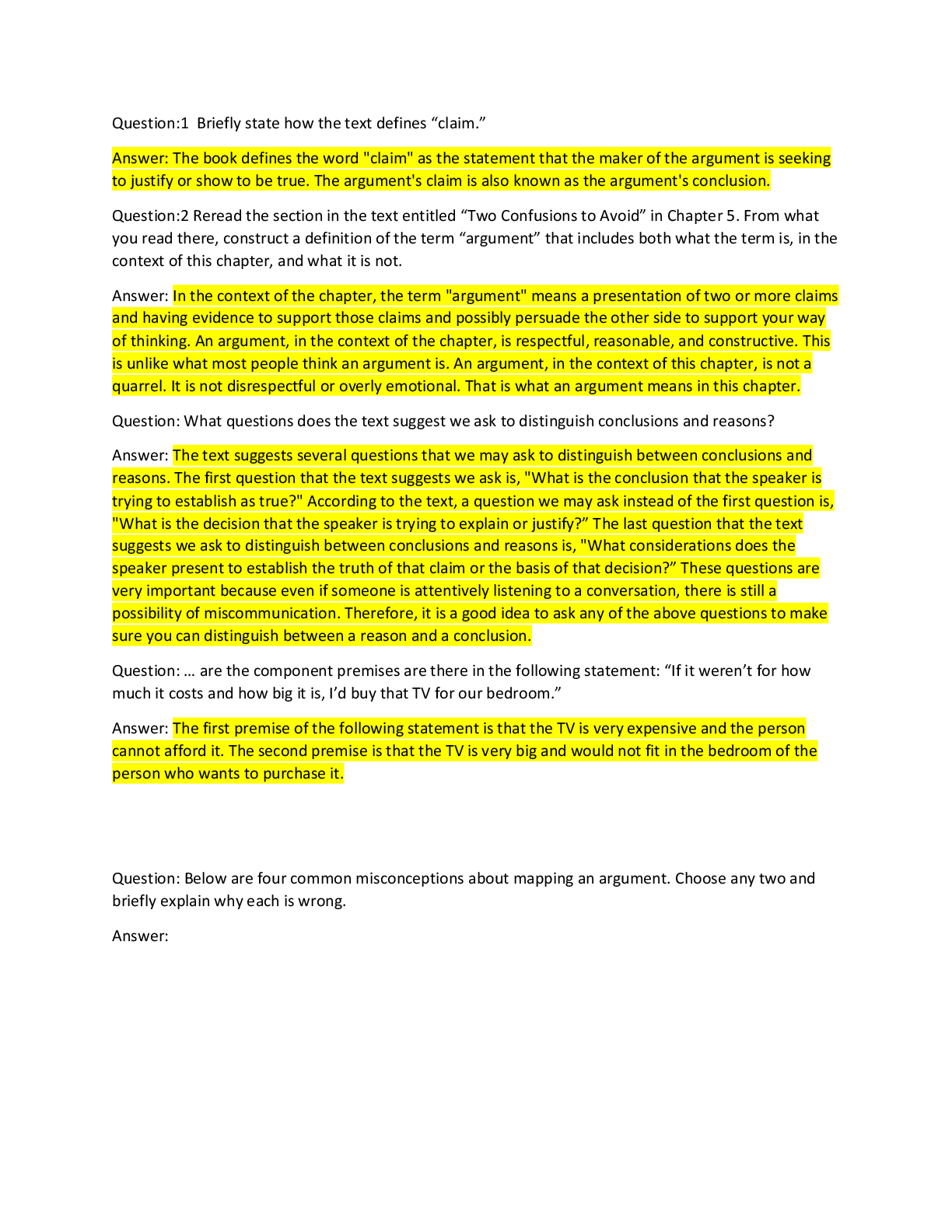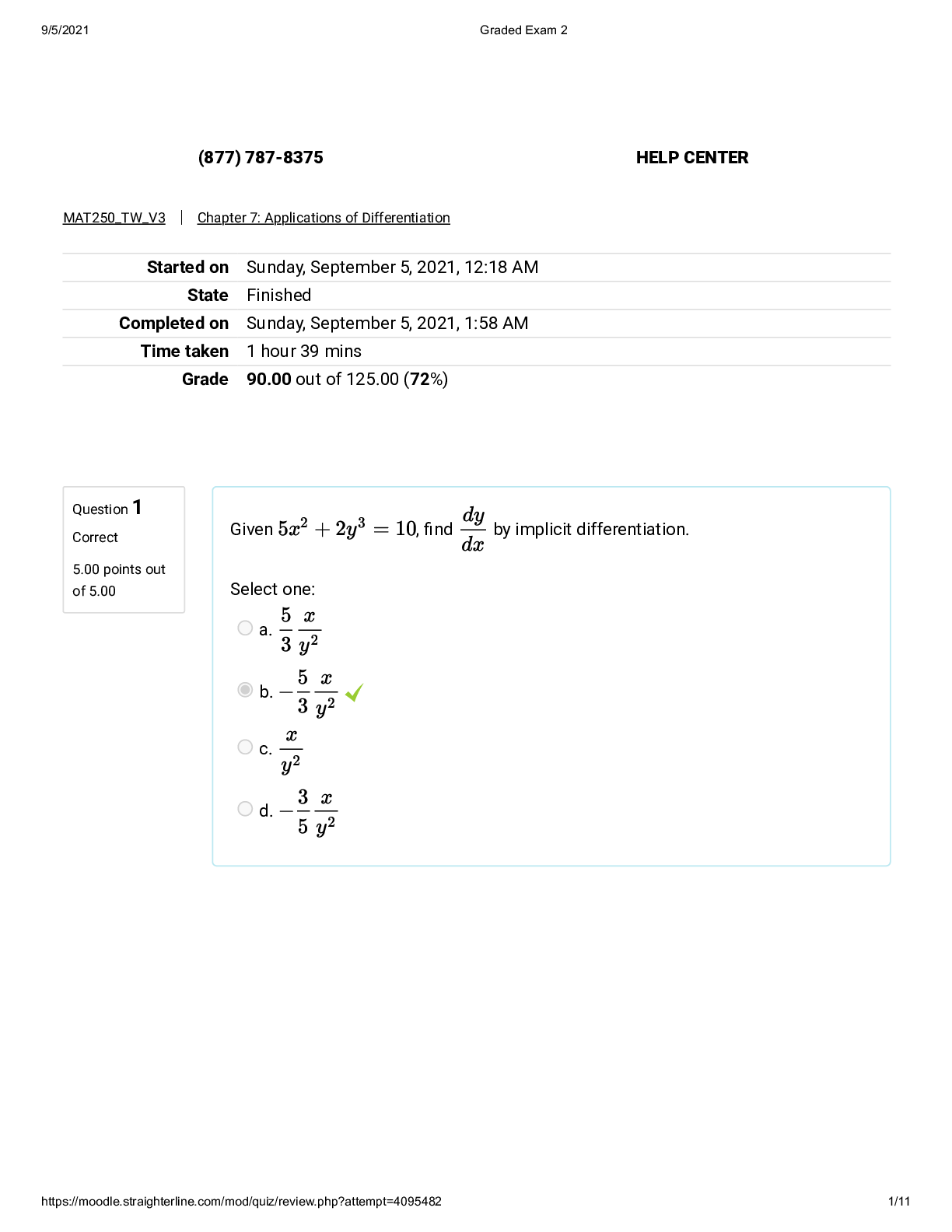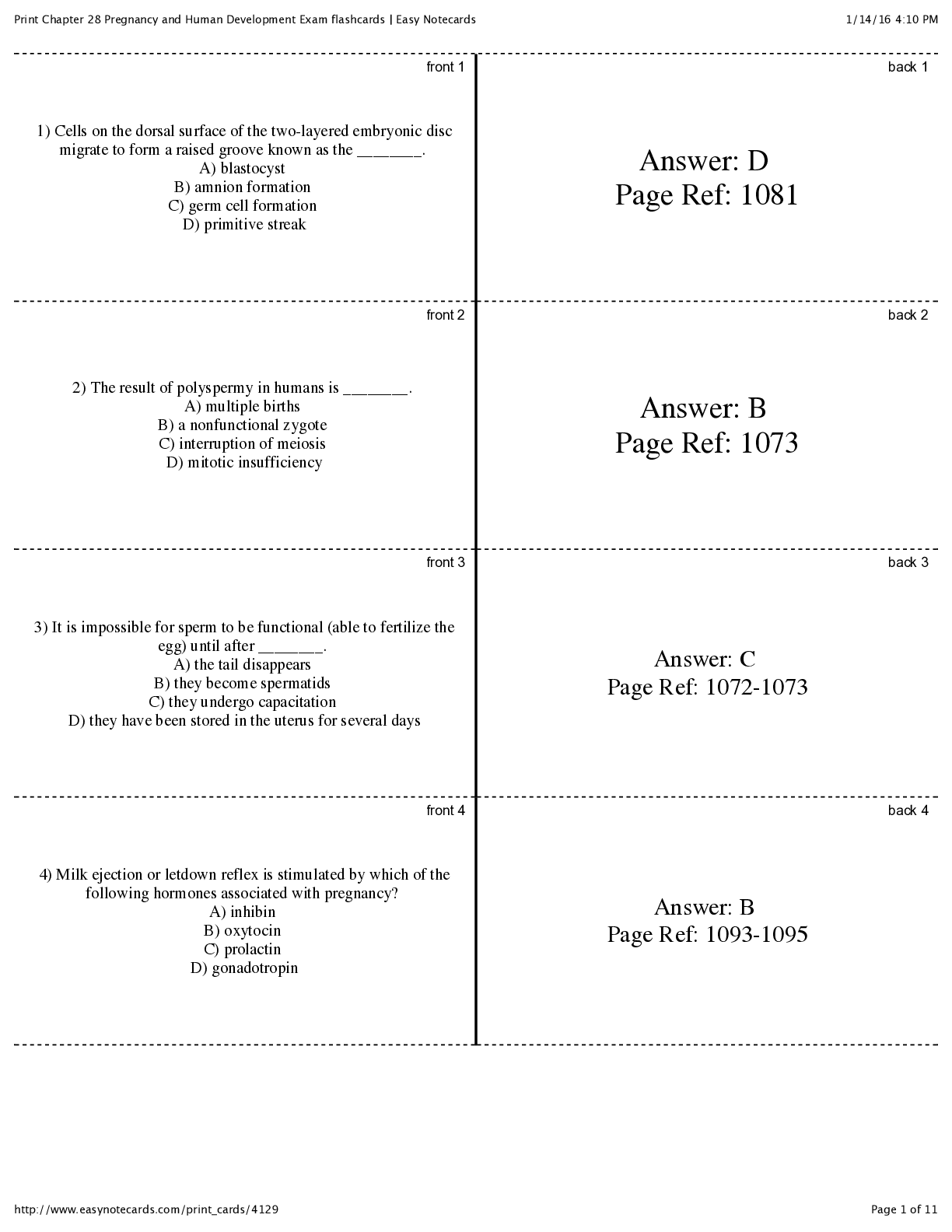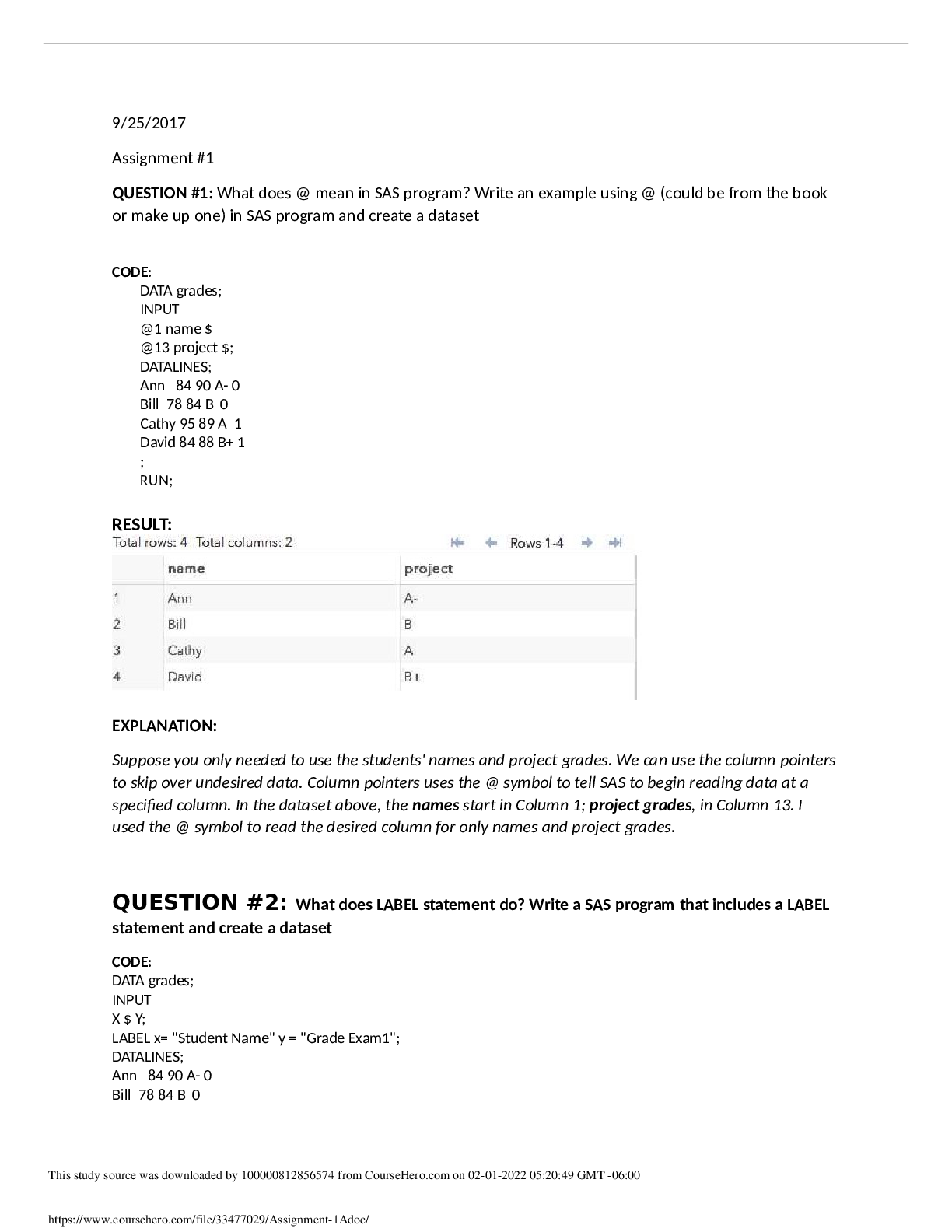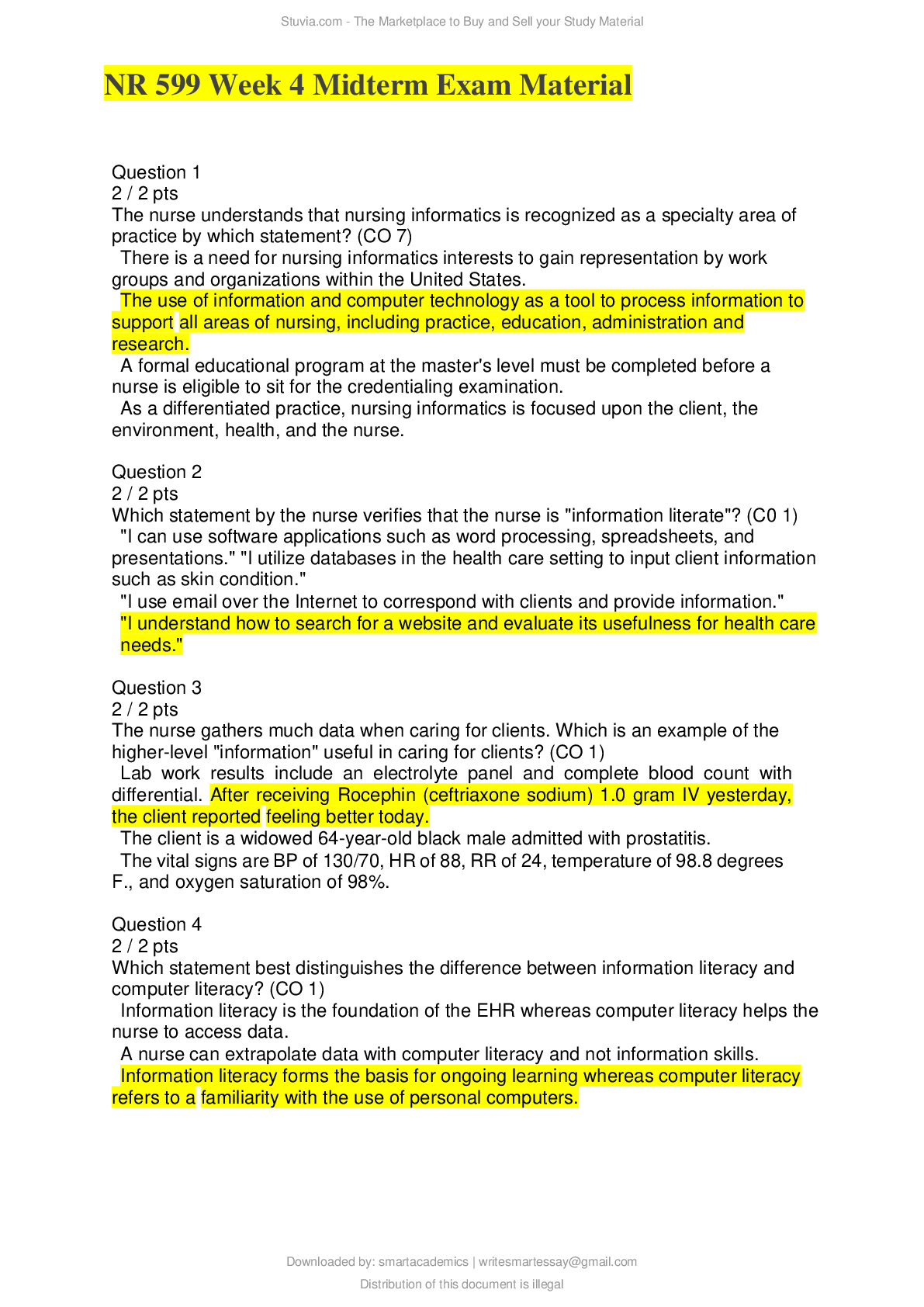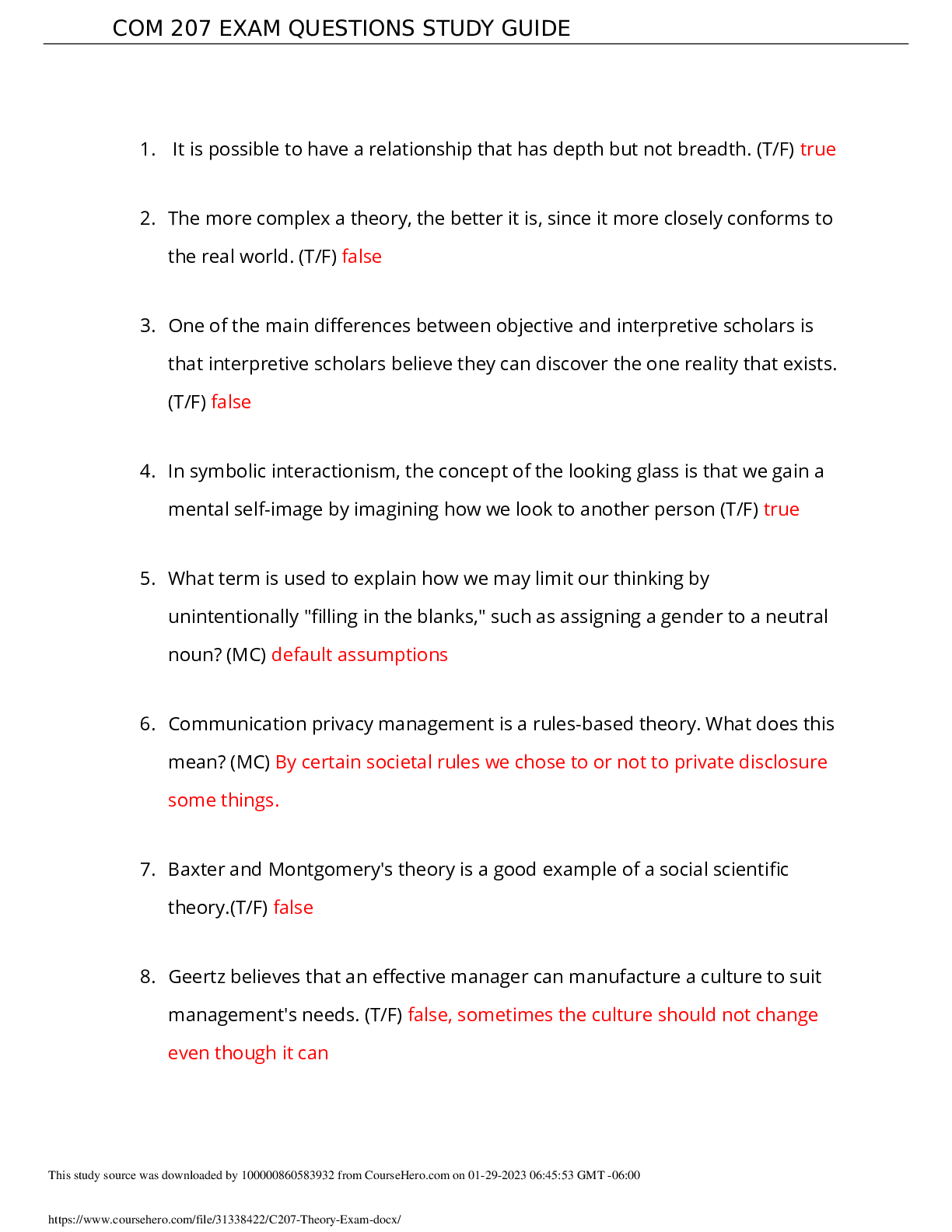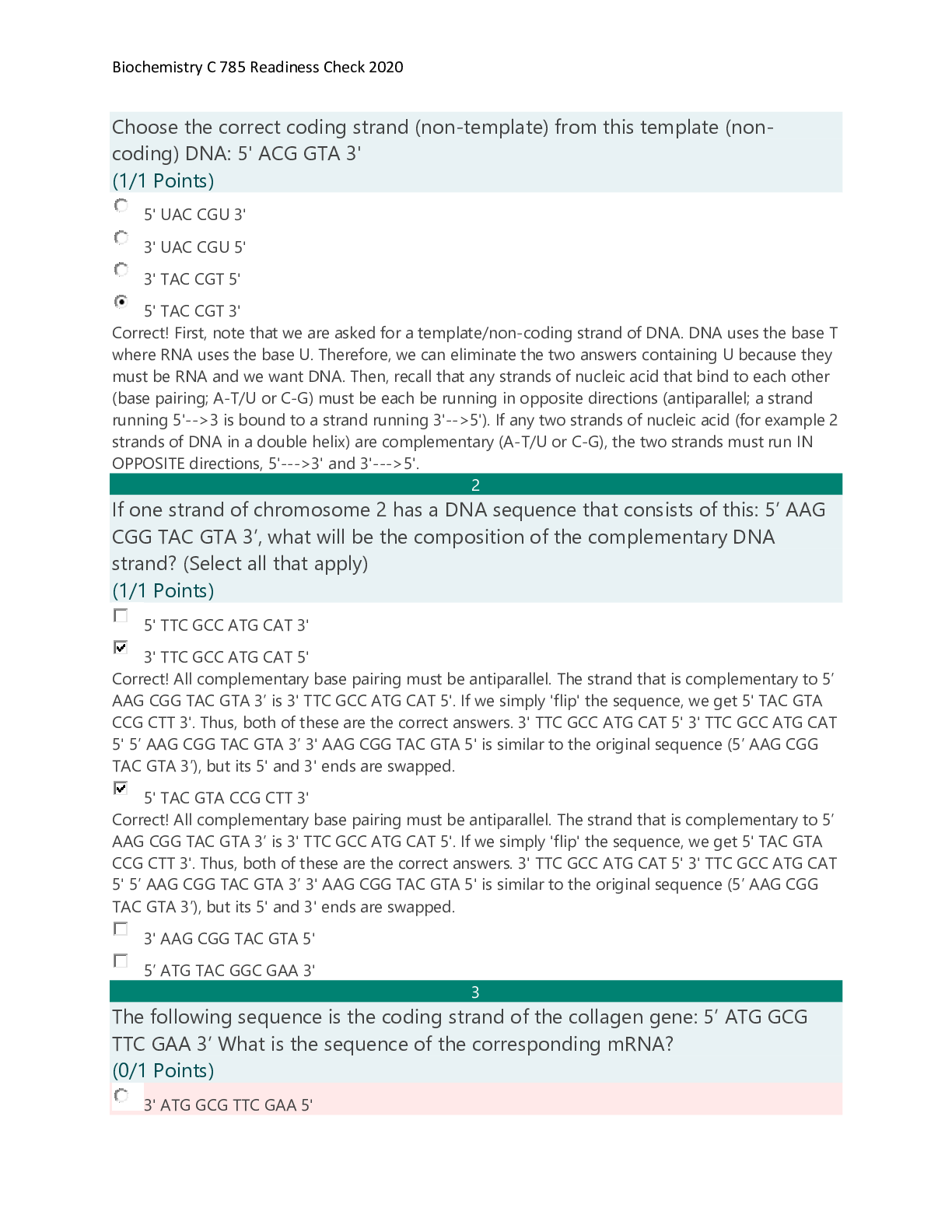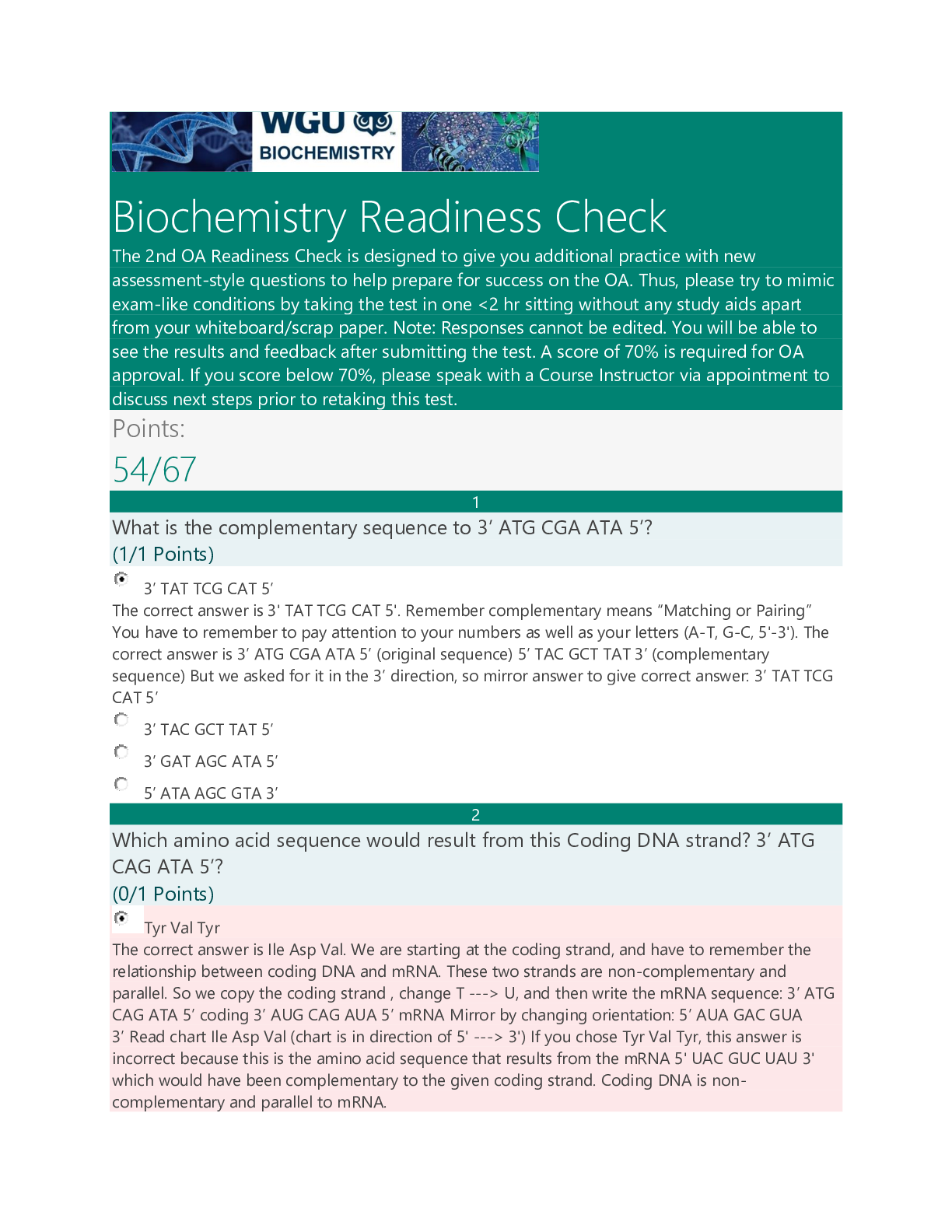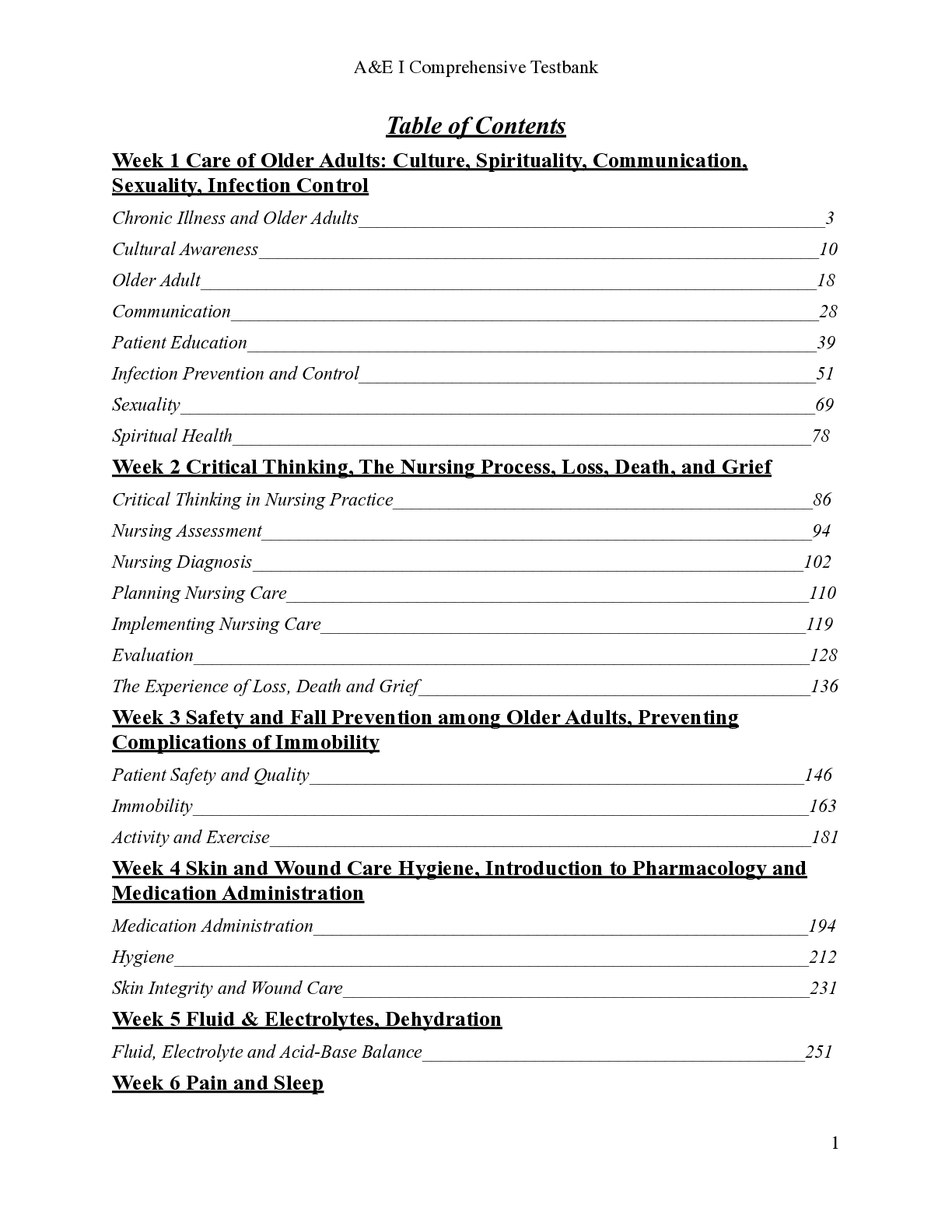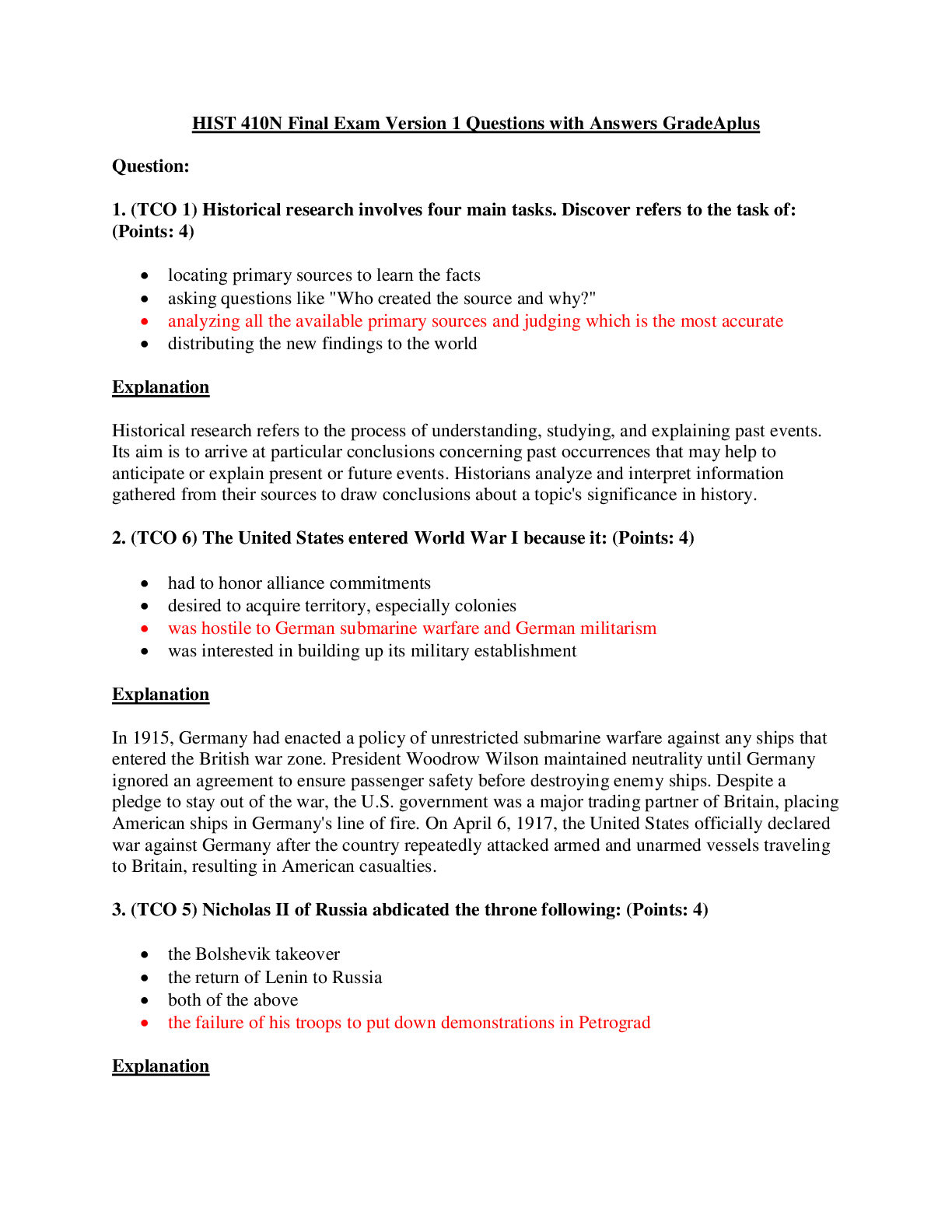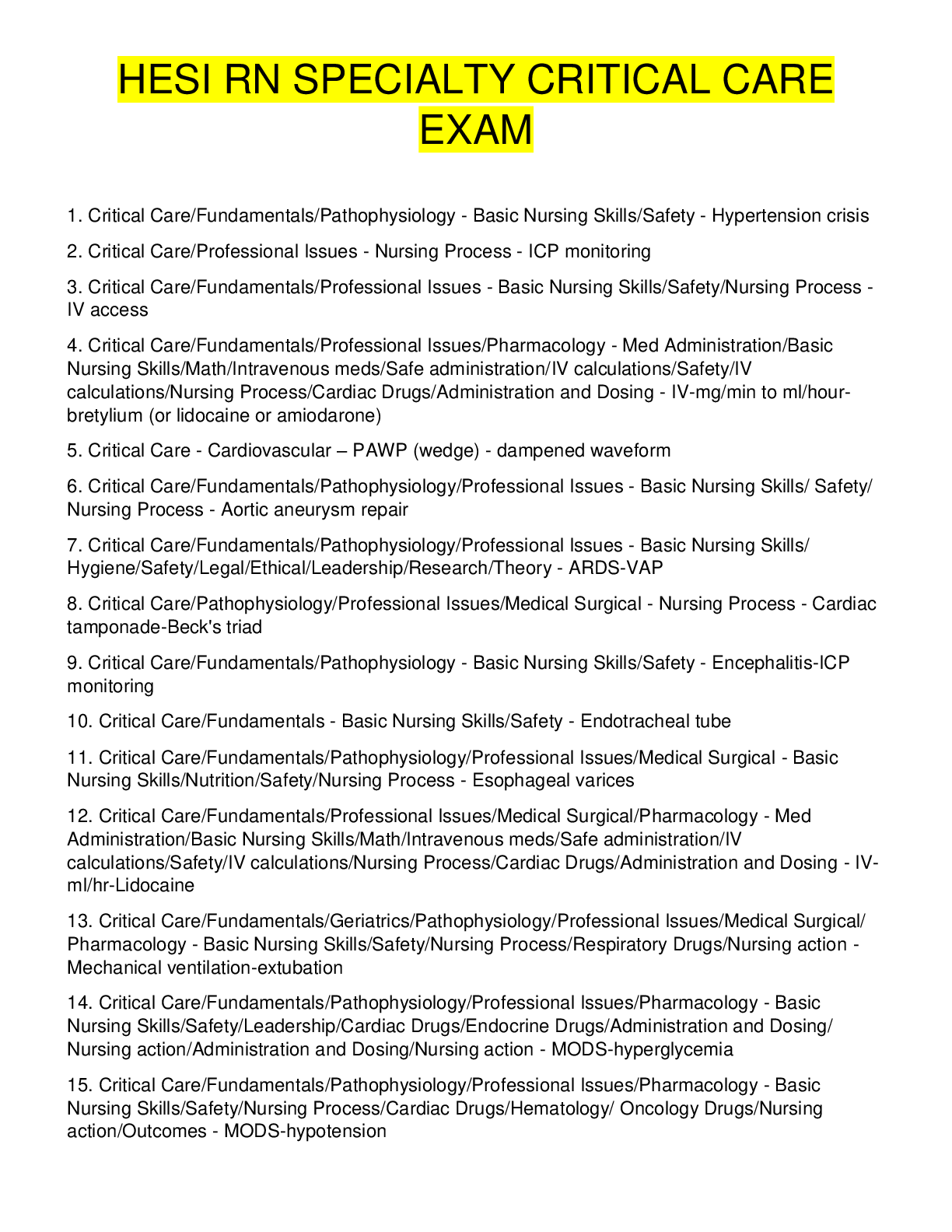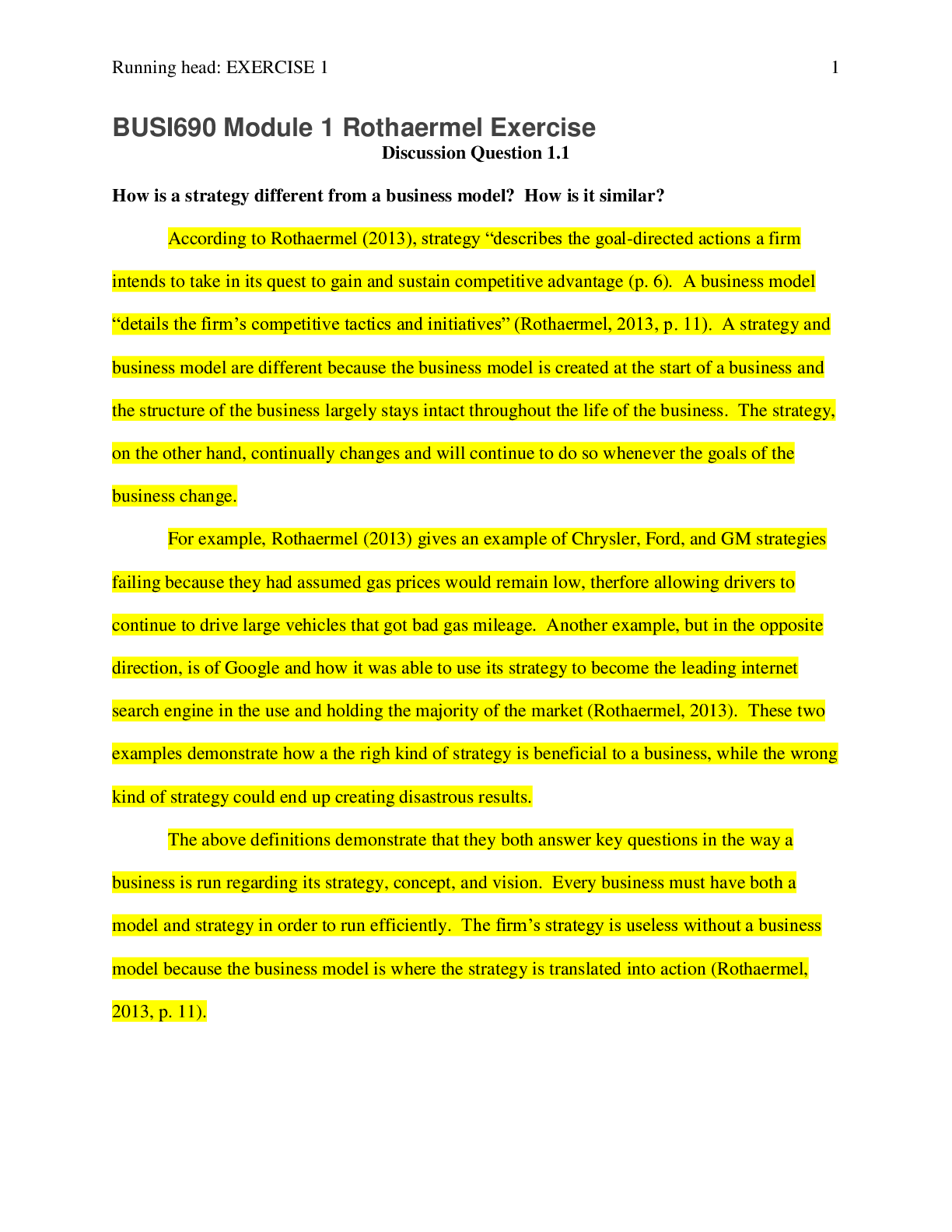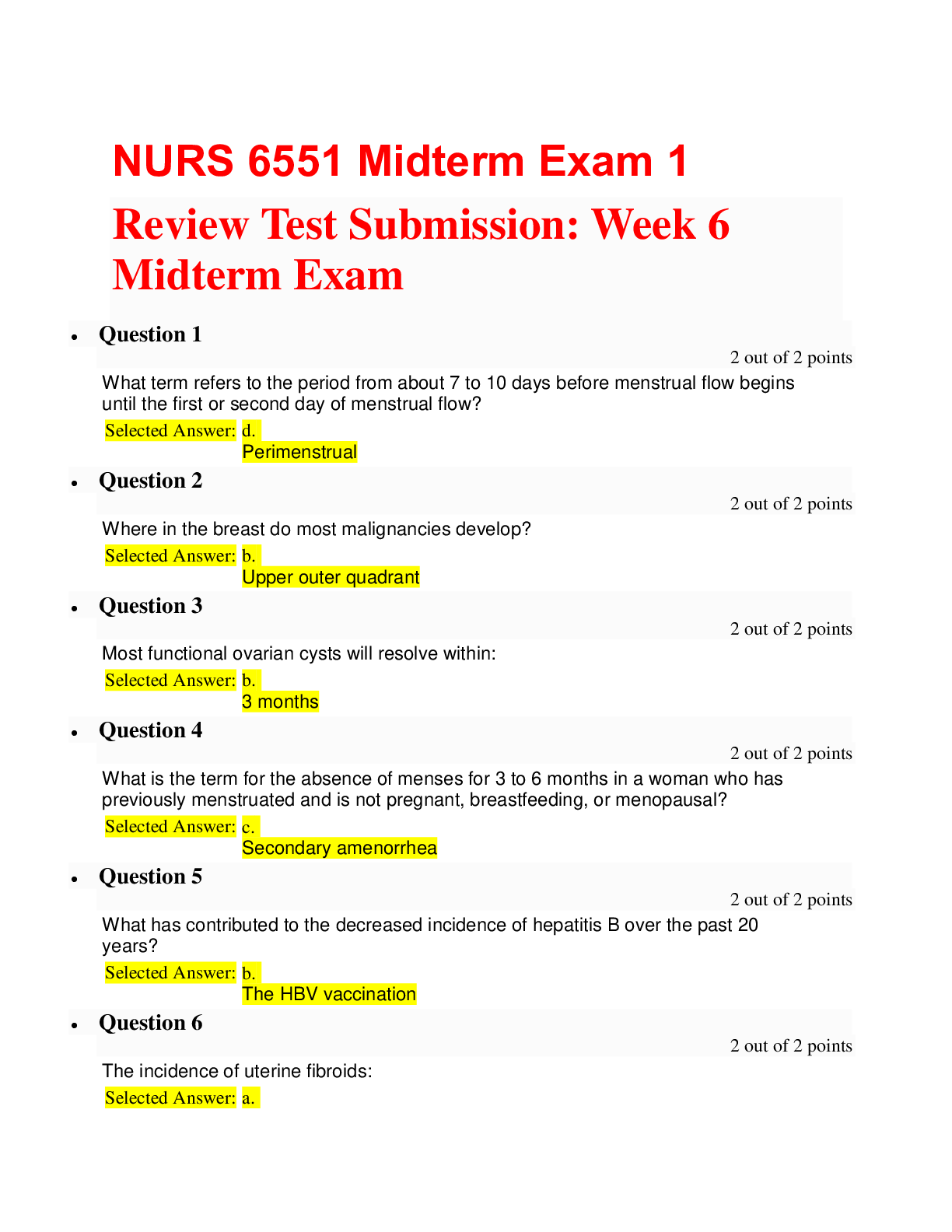*NURSING > EXAM > NR 340- critical care Exam 1 QUESTIONS WITH HIGHLIGHTED ANSWERS GRADED A+- Chamberlain (All)
NR 340- critical care Exam 1 QUESTIONS WITH HIGHLIGHTED ANSWERS GRADED A+- Chamberlain
Document Content and Description Below
1. When planning care for a client who is critically ill, what action should the nurse implement to decrease the client's stress? a. Strictly limit visitors. b. Play soft soothing music. c. Set lig... hting for day/night cycles. d .Plan care to minimize interactions with the client. 2. The nurse is caring for a client with terminal cancer. It is essential for the nurse to consider which aspect of this client's care? a. Requesting that the chaplain visit the client. b. Compliance with the client's living will. c. Maintaining a soothing environment. d. Frequent family visitation. 3. When caring for an older adult client in the critical care setting, how can the nurse best assess for pain? a. Use the FACES Pain Scale. b. Observe non-verbal cues. c. Use the visual analog scale. d. Ask the client for a pain score. 4. . What finding would the nurse address first following the administration of an opioid analgesic in a client who is critically ill? a. Hypotension b. Constipation c. Increased pain *d. Respiratory depression TYPE: MA 5. In caring for a terminally ill client during the ventilator weaning process, the nurse should be alert for which signs of discomfort? (Select all that apply) a. Dyspnea b. Tachycardia c. Bradycardia d. Hypotension e. Use of accessory muscles 6. When caring for a client in the critical care setting, which environmental factor should the nurse control to reduce stress? a. Noise b. Light c. Visitation d. Lack of privacy 7. An intensive care nurse is receiving bedside report from members of the healthcare team for further management of care. What information would require immediate action by the oncoming team? a. Wheezes are noted throughout lung fields on auscultation. b. There is noted paradoxical thoracoabdominal movement. c. Client is on a ventilator that includes the use of heliox. d. Client has a prolonged exhalation. 8. A client reporting dyspnea and chest pain with inhalation is being prepared for a high-resolution multidetector computed tomography angiography (MCDTA). What information would the nurse include in the plan of care? a. The client should remain still during the diagnostic test b. This is a nonspecific test, which could be positive with infections also c. The client will have to have their legs available for the diagnostic test d. This is an invasive test; afterwards the client will have to lie still for 4 hour 9. . What does the nurse understand has the most potential to be a risk factor for acute respiratory distress syndrome in a client undergoing general anesthesia for surgery? a. Poor nutritional stasis b. Aspiration of gastric contents c. Pregnancy d. Chronic bronchitis 10. A client is receiving corticosteroids for the development of acute respiratory distress syndrome (ARDS). What would the nurse evaluate to determine the client is not developing side effects? a. Monitor for lower extremity edema b. Check skin turgor *c. Assess the client’s mouth for thrush d. Watch sclera for yellowing 11. A nurse is evaluating a post-operative client with chronic obstructive pulmonary disease for surgical complications. What assessment finding would the nurse understand as a potential risk factor for the development of post-surgical acute respiratory distress syndrome to be for this client? a. client is not orientated to person, place, or situation b. client’s last food prior to surgery was ten hours ago c. client states “sitting upright helps my breathing” d. Clubbing of the fingers 12. The nurse is caring for a client with acute respiratory distress syndrome (ARDS) and is on mechanical ventilation. What is the primary reason the client is being mechanically ventilated? a. So the client is fed via nasogastric tube. b. So the client can be sedated and rest. c. To maintain adequate blood pressure. d. To manage the client’s respirations. 13. . A client with acute respiratory distress syndrome (ARDS) on mechanical ventilation is becoming increasingly restless. The client’s heart rate is 128 beats/min and oxygen saturation is 88% on FiO2 of 50%. Coarse rhonchi are audible in all lung fields on auscultation. What action should the nurse implement? a. Hyperoxygenate with 100% oxygen and suction the client. b. Administer neuromuscular blockade as ordered. c. Increase PEEP to 10 and sedate the client. d. Increase FiO2 to 60% for five minutes. 14. . A nurse is analyzing a client’s lab values. What would the nurse understand factors into the analysis of oxygen saturation levels of a client? a. D-dimer assay b. Glomerular filtration rate c. Percentage of neutrophils d. Hemoglobin level 15. The nurse is caring for a client with a history of asthma who recently had surgery. The nurse is suspecting possible acute respiratory failure. The client’s respiratory rate is 32 bpm and Sa02 is 88% on room air. The client is reporting pain at a level of 3 out of 10. Which action is a priority? a. Apply oxygen device b. Position client upright. c. Provide pain medication as needed. d. Prepare for lab draw for hemoglobin level. 16. A geriatric client is seen in the clinic with a diagnosis of chronic obstructive pulmonary disease (COPD). What assessment information does the nurse understand could affect oxygenation and would be a risk factor for the development for acute respiratory failure? a. Presence of a barrel chest in the client b. Kyphosis c. Hemoglobin of 10.1 mg/dL d. Weight loss of 5 lbs in 6 months 17. A client presents to the Emergency Department (ED) with shortness of breath and use of accessory muscles. Vital signs on admission are as follows: blood pressure of 130/88, heart rate of 102, respiratory rate of 30, oxygen sat 89%. Which assessment findings are early indications of worsening respiratory failure? a. Subcutaneous crepitus, absent breath sound [Show More]
Last updated: 2 years ago
Preview 1 out of 31 pages
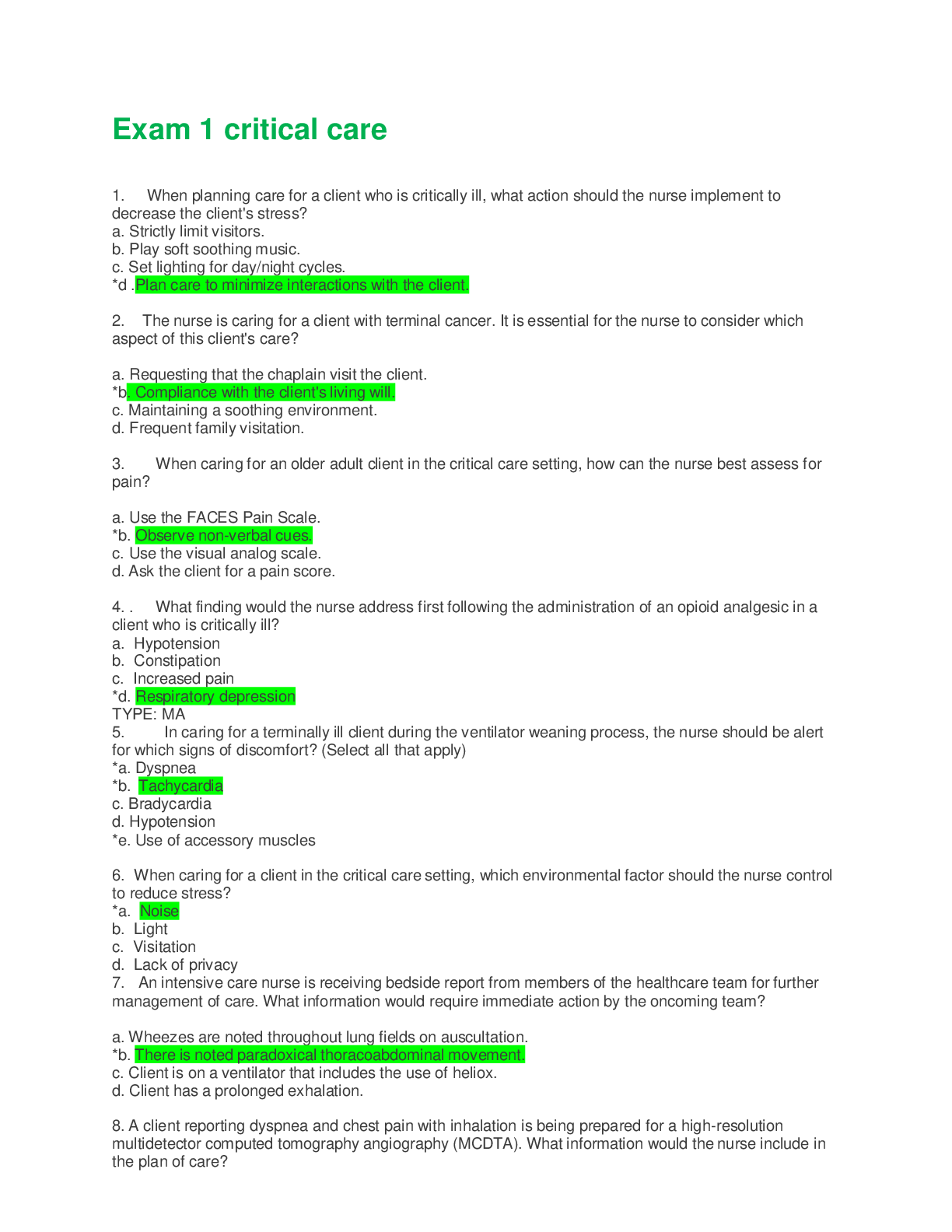
Buy this document to get the full access instantly
Instant Download Access after purchase
Buy NowInstant download
We Accept:

Reviews( 0 )
$14.00
Can't find what you want? Try our AI powered Search
Document information
Connected school, study & course
About the document
Uploaded On
Nov 23, 2021
Number of pages
31
Written in
Additional information
This document has been written for:
Uploaded
Nov 23, 2021
Downloads
0
Views
177

.png)
